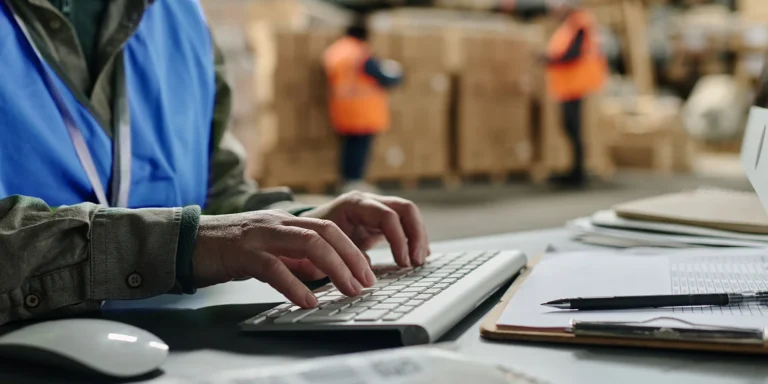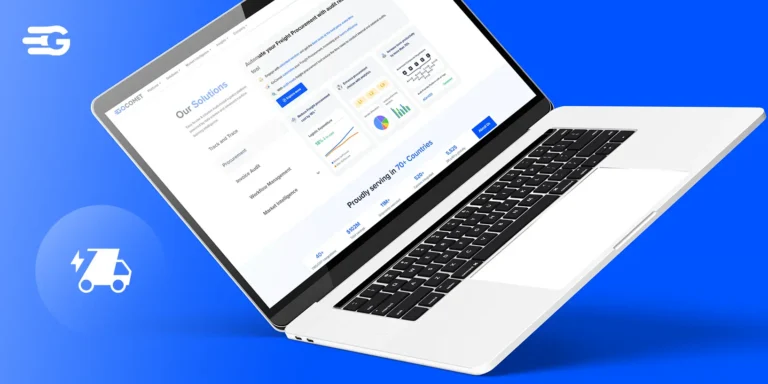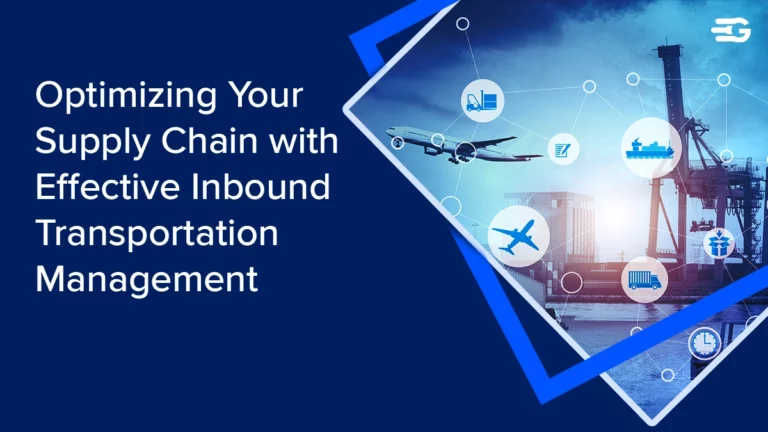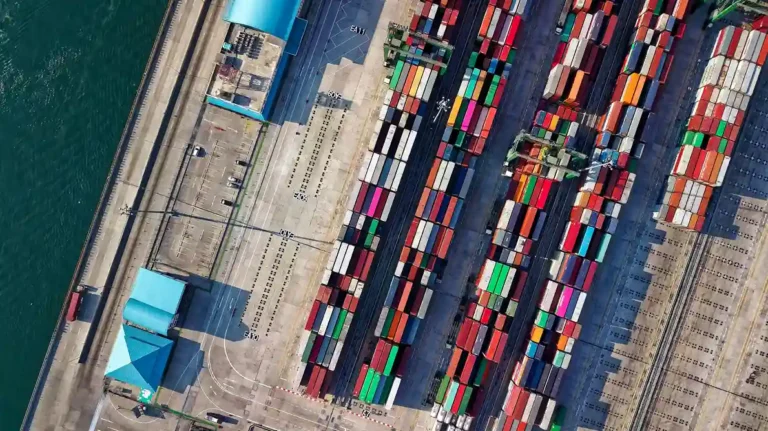Is Logistics Automation, the next phase of supply chain optimization?
In the course of rapid innovation undergoing in the supply chain management paradigm, logistics automation is the next milestone.
But what exactly is it?
Logistics automation refers to the strategic integration of technology, including machinery and software, to optimize various aspects of the supply chain. This encompasses everything from receiving raw materials to warehousing, order fulfillment, and ultimately, delivery to the end customer.
However, it is a simplistic way of defining supply chain automation as it culminates several facets that reach and influence every nodal point of supply chains.
A 2020 survey revealed that while the adoption of AI in supply chain management is slow, there’s significant anticipation for future growth. Only 12% of surveyed professionals say their organizations currently use AI, but 60% expect to see AI integration within the next five years. This slow initial climb is primarily due to difficulties in hiring qualified tech talent and managing data streams. The report also found that 28% of respondents are already utilizing predictive analytics, a technology with close ties to AI.
While, a Gartner survey, suggests that supply chain leaders need to embrace new technologies like AI, robotics, and blockchain to stay competitive. Robotics are transforming warehouse operations with collaborative robots expected to supplement 30% of workers by 2023. AI, advanced analytics, and IoT are expected to be used by 50% of large companies by 2023. However, while blockchain is a popular topic, only 19% of respondents see it as important and 9% have invested due to a lack of clear use cases.
So, logistics automation isn’t a one-size-fits-all solution. It encompasses a diverse range of technologies and practices that tackle different aspects of the supply chain.
So, given that the definition of logistics automation, itself falls short, it can be broadly classified to identify the definitive role at individual operations and as well as work together are a network of ancillaries that contribute immensely to the innovation in the supply chain and logistics domain.
- Warehouse Automation
- Transportation Management Systems (TMS)
- Inventory Management Automation
- Predictive Analytics
- Robotic Process Automation (RPA)
Broadly as mentioned, these are just a few of the many facets of logistics automation.
One can vouch for the fact that by strategically implementing these automation technologies, businesses can achieve significant improvements in efficiency, accuracy, and cost-effectiveness across their entire supply chain.
While this is established now, it is imperative to delve into the nitty-gritty of each of these facets and understand the what and how of it.
What is Warehouse Automation? And isn’t robotics and conveyor belts a blend of manufacturing and fiction or manufactured fiction?
Well, the simple answer would be no.
The warehouse floor is no longer just a space for storing goods. It’s become a dynamic hub where robots and conveyor belts work in tandem to revolutionize how products are received, stored, retrieved, and shipped.
Robots:
Robots with sophisticated vision systems and articulated arms can efficiently pick and place items of various shapes and sizes replacing the cumbersome manual packaging. This not only increases speed and accuracy but also reduces fatigue and injuries among human workers.
Robotic arms equipped with grippers can effortlessly stack boxes, bags, or other items onto pallets, creating stable and secure loads for transport. This eliminates the physically demanding task of manual palletizing.
Similar to palletizing, robots can also automate the process of unloading pallets. This frees up human workers for other tasks and ensures consistent and safe handling of goods.
Conveyor Belts:
Conveyor belts act as the arteries of a modern warehouse, seamlessly transporting goods from receiving areas to storage locations, picking zones, and ultimately, packaging and shipping stations. This eliminates the need for manual handling and reduces the risk of damage to products.
Conveyor systems can be equipped with sorters and diverters that automatically route products based on specific criteria like size, weight, or destination. This streamlines order fulfillment processes and ensures products are directed to the correct location quickly and efficiently.
All in all, conveyor belts work hand-in-hand with robots. Robots can pick items from a conveyor, place them on another conveyor for further processing, or receive items from a conveyor for packing. This seamless integration creates a smooth flow of goods to and at the warehouse. Thus making things operate at the click of a button figuratively.
As we have already entered the realms where fiction and reality converge, do you foresee the possibility of autonomous vehicles and drones?
Well, the future looks unmanned arriving on wheels and wings. Autonomous vehicles (AVs) and drones are rapidly emerging as game-changers in the logistics landscape, promising to transform how goods reach our doorsteps.
Autonomous Vehicles (AVs):
Self-driving trucks have the potential to revolutionize long-distance transportation. They can operate 24/7, reducing delivery times and increasing efficiency. Additionally, AVs can potentially reduce accidents caused by human error, leading to safer roads.
For shorter distances, autonomous vans and cars can handle last-mile deliveries. This would free up traffic congestion caused by delivery trucks and improve fuel efficiency due to optimized routes. Customers could benefit from faster delivery times and more flexible scheduling options.
Drones:
Drones excel in reaching areas with difficult access or dense urban environments. They can deliver packages directly to rooftops or designated landing zones, offering a quicker and more targeted approach compared to traditional delivery methods.
Drones’ speed and agility make them ideal for delivering time-sensitive items like medical supplies or perishable goods. This can revolutionize access to critical resources in remote locations or during emergencies.
Understood that the delivery experience for the customer might not be looking at a delivery person clad in company colors handing over the packages. What shall the impact of the machines instead of humans?
AVs can operate for longer durations and optimize routes, leading to faster deliveries and reduced costs. Drones can access hard-to-reach areas, further extending reach and efficiency. With fewer human drivers needed, labor costs associated with traditional deliveries can decrease. Additionally, optimized routes and improved fuel efficiency can further reduce operational costs.
So, in a nutshell, customers can potentially benefit from faster deliveries, more flexible scheduling options, and even real-time tracking of their packages.
As much as we discuss and discover the scope of innovation in the domain of automation, the obvious question lies, how useful are they? Can we not continue with human delivery from door to door?
Every change has a startling effect and it is not different with logistics automation. Precisely, it is a strategic investment that offers a multitude of benefits for businesses.
Increased Efficiency and Cost Reduction
Integrating automation into the supply chain offers a multitude of benefits. Automated systems using robots and conveyor belts can drastically accelerate order processing and fulfillment compared to manual labor. While there’s an upfront investment, automation reduces reliance on manual labor in the long run, leading to cost savings and allowing human workers to focus on more strategic tasks.
Additionally, Transportation Management Systems (TMS) can optimize delivery routes for efficiency, while warehouse automation ensures optimal storage and retrieval of goods. Finally, automation minimizes human error, reducing product returns, rework, and associated costs.
Better Consumer experience
Automation eliminates the emotional physical contingencies that are evident with human delivery systems. Further, automation goes beyond just speed; it improves accuracy and customer satisfaction. Automation throughout the supply chain translates to a happier customer.
Fewer picking errors mean you get the right items the first time, and real-time order tracking keeps you informed. By tackling repetitive tasks, automation frees up customer service for your complex questions and optimizes inventory to ensure what you need is always in stock. It’s a win-win for everyone.
A Singapore study on the consumer acceptance of autonomous delivery robots for last-mile delivery with the advent of the pandemic has witnessed a noticeable pivot. The research suggests people are more likely to embrace these robots if they’re easy to use, perceived as valuable, and promote hygiene. This highlights the importance of user-friendly design, clear communication of benefits, and ensuring cleanliness for wider adoption of delivery robots.
Ok! Agreed that Automation in Logistics and Supply Chain is great for the customers. But there is a price that the business has to pay for it. What is it and how big is it?
The road to a more automated logistics operation starts with careful planning and a clear understanding of your current state. Here’s a two-step guide to get you started:
Assessing Your Current Logistics Processes
Before diving headfirst into automation, it’s crucial to analyze your existing logistics operations. Here’s a roadmap for self-assessment:
Pinpoint areas in your supply chain that experience delays, inefficiencies, or high error rates. This could be anything from slow order processing to manual data entry or inefficient warehouse picking.
Measure the cost and time associated with these bottlenecks. Consider factors like labor costs, processing times, and error rates. Having quantifiable data strengthens your case for automation and helps prioritize areas for improvement.
Identify tasks that are repetitive, manual, and rule-based. These are prime candidates for automation, as robots and software can perform them with greater speed and accuracy.
Assess your current data management practices. Effective automation relies on accurate and readily available data. Consider areas where data entry can be automated or where data integration between systems can be improved.
By thoroughly evaluating your current processes, you gain a clear picture of where automation can provide the most significant benefits.
Now with the awareness of the value addition that automation can bring into logistics, the next obvious pitstop would be the how. How does one choose the right Logistics Automation Tools?
Once you’ve identified automation opportunities, it’s time to choose the right tools for the job. Here are some key considerations:
- Align with Needs: Don’t get caught up in the latest technology. Focus on solutions that directly address your identified bottlenecks and business goals.
- Scalability: Consider your future growth plans. Choose automation tools that can scale alongside your business needs, allowing for future expansion and integration
. - Integration: Ensure the chosen technology integrates seamlessly with your existing software systems like Warehouse Management Systems (WMS) or Transportation Management Systems (TMS). This creates a unified workflow and avoids data silos.
- Return on Investment (ROI): Evaluate the cost of implementing the technology against the projected cost savings and efficiency gains. Look for solutions that offer a clear and measurable ROI.
- Implementation and Support: Consider the ease of implementation and the level of support offered by the automation provider. Training your workforce on new systems is crucial for a successful transition.
While we discuss the positives of automation and the intricacies of implementation, it is crucial to look at the seeming challenges that can impact the entire automation ideation.
So what are hurdles that exist in this context?
Upfront costs can be high, so start small with scalable solutions. Address employee concerns by reskilling them for higher-value tasks. Integration complexity can be tackled through phased implementation and standardized data formats. While some technologies are evolving, pilot programs and continuous evaluation mitigate risk.
Last but not least, prioritizing cybersecurity with robust measures and regular assessments is a must given the sheer amount of binary digits involved in executing such operations.
Understood that infrastructure shall be a capital expenditure, that eliminates the small businesses to adapt this form of automation. But even then, for large conglomerates, there will always be a downside to it.
Moreover, given the novelty of the idea, there can be several unprecedented complications. What are they and how do we deal with them?
True. The conundrum of pitching automation as the ultimate game-changer is frankly myopic. Automation in logistics but it’s not without its bumps. Here are some common challenges and how to navigate them:
Cost Hurdle: Automation often requires a hefty upfront investment.
Solution: Start small, focusing on areas with the biggest impact. Choose scalable solutions that grow with your business, and explore financing options.
Workforce Worries: Employees may fear job losses.
Solution: Foster transparency. Emphasize how automation complements human roles, not replaces them. Invest in reskilling and upskilling programs to prepare your workforce for the new normal.
Integration Maze: Connecting new systems with existing ones can be complex.
Solution: Implement phased integration, tackling core systems first. Utilize middleware and standardized data formats to streamline the process.
Tech Tug-of-War: Emerging technologies might not be fully mature.
Solution: Conduct thorough research and pilot programs before full-scale deployment. Stay updated on advancements to identify solutions that best address your evolving needs.
Cybersecurity Threats: Increased reliance on technology opens doors for cyberattacks.
Solution: Prioritize cybersecurity with regular software updates, strong passwords, and employee training. Choose solutions with built-in security features and conduct regular risk assessments.
With these aspects in mind, preparing for the future with Automated Logistics is imperative. If this is the approaching future, what other fiction fantasies are the industries heading toward?
Expect near real-time visibility and control across the supply chain. AI-powered systems will optimize inventory, predict demand fluctuations, and streamline transportation routes for unparalleled efficiency.
Self-driving trucks, delivery drones, and warehouse robots will become commonplace, reducing human intervention and accelerating delivery times.
Automated systems will enable real-time adjustments to disruptions, like weather events or port closures. This agility will ensure a more robust and responsive supply chain.
That’s imaginative and futuristic indeed. The implications of such development shall be different for each stakeholder in the supply chain network. How does it disrupt the concurrent systems? How much is the dissonance at a strategic level?
Automation promises a revolution across various sectors. Retailers can expect happier customers and boosted profits thanks to faster deliveries, optimized inventory, and reduced costs. Manufacturers will see streamlined production, reduced waste, and just-in-time deliveries, leading to higher output.
In healthcare, automation will transform the delivery of critical supplies, improving patient care and potentially saving lives. Finally, e-commerce will reach new heights with the promise of faster and more affordable deliveries facilitated by automation.
Across industries, automation will empower businesses to operate with greater efficiency, agility, and responsiveness, ultimately transforming the very fabric of supply chain management. So, the future of logistics is automated, and the time to embrace it is now or perish in among the hover drones and speeding robots.
However, navigating this transition can seem daunting. Carrying out each procedure that is mentioned above diligently needs a lot of work, analysis, and A/B testing.
So, the most important question of all is, is there someone who can readily do all of this for your business?
That’s where GoComet steps in. As a leading AI-powered logistics solution provider, GoComet offers a comprehensive suite of automation tools designed to empower your business. We help you identify areas for improvement, choose the right technology for your needs, and seamlessly integrate automation into your existing workflows.
GoComet doesn’t just provide technology; we become your partner in the automation journey. With our expertise and industry-leading solutions, we’ll help you unlock the full potential of logistics automation and propel your business toward a future of exceptional efficiency and success.





